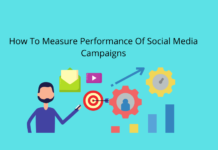Online Advertising has many models to run Ads. But, it’s important to understand how different online ad models can impact the revenue. Marketers should choose the model according to the objective and target of the business.
Some of the major online adverting models are CPC (Cost per Click) or Pay per click (PPC), Pay-per call, CPA, VPA (Value per Action), eCPA (Effective cost per action), CPI (Cost per Impression) / PPI (Pay per Impression), CPM (Cost per Thousand), Shared CPM, eCPM (Effective Cost Per Mile), CTR (Click-Through Rate), CPS (Cost-Per-Sale). In this article, we will discuss about CPM, CPC, CPL and CPA models.
So, if you want to to learn how to spend most of advertising dollars effectively then stay tuned.
Online Ad Models |
|
1. Cost per Thousand Impression(CPM)
Cost per Thousand (CPM): This is also known as “cost per mille.” This marketing term used to denote the price of 1,000 advertisement impressions or displays on one webpage. For eg. If publisher charges $1.00 CPM, that means an advertiser must pay $1.00 for every 1,000 impressions of its ad.
How to calculate Good CPM: To calculate the CPM of your campaigns keep track of other campaigns and then make valid comparisons. This way you can set a benchmark of your industry and can easily calculate the good CPM.
Now, gauge the CPM and figure out if your CPM good or not. Check it is above or below the average for your industry. For example, a small eCommerce CPM is $1.20. So if you’re running ads and your CPM is above $1.20, you’re paying much, but if it is below $1.20, you’re getting a good CPM.
Note* CPM usually used by advertisers for a brand awareness campaign and CPC for direct-response advertising.
2. Cost per Click (CPC)
Also known as pay-per-click (PPC), cost per click (CPC). This method intended for direct-response advertising and also considered as performance-based ad model. In this model, the advertiser pays based on the number of times a visitor clicks on an advertisement.
In CPC models, advertisers bid how much they are willing to pay for each click, and can set their daily budget. During this auction, the publisher uses a complex algorithm to check the unique and returning visitors. If the Ad is targeting for unique visitors then the along with the most valuable keywords the CPC of that Ad goes high. Also, the auction for ads is dynamic, so CPC changes constantly.
3. Cost per Lead (CPL)
Now CPL and CPA are little similar, the only difference is- in CPL payment is based on the number of qualifying leads generated i.e sign up forms, Coupons & Vouchers, Surveys, Newsletters. It is also performance-based adverting like CPC.
Here the role of publishers is more focused to put their ads in front of the right audiences to get right leads. Thus, it is also be known as online lead generation or lead generation Cost per Lead model.
4. Cost per Acquisition (CPA)
In CPA, publishers only receive payment for completed sales or action, the action could be a purchase, a newsletter sign up, an app download, or any conversions. This marketing metric plays a vital role in the measurement of marketing success.
Now, how to consider the good CPA of the campaign? Good CPA fluctuates business to business because, different business has different margins, prices, and operating expenses.
Many marketers, opt for CPA bidding because of the ability to pay for a direct result and easily compare performance across channels.
Note* For running CPL ads, publisher charge on the basis of viewing the ad, clicks on the ad, and then the action takes on that ad to become a qualified lead for a sale. But, in CPA publisher charge only when specific event complete by the user like purchase, add to cart, etc.
For the latest tech news follow techcresendo on Twitter, Facebook, and LinkedIn



















































